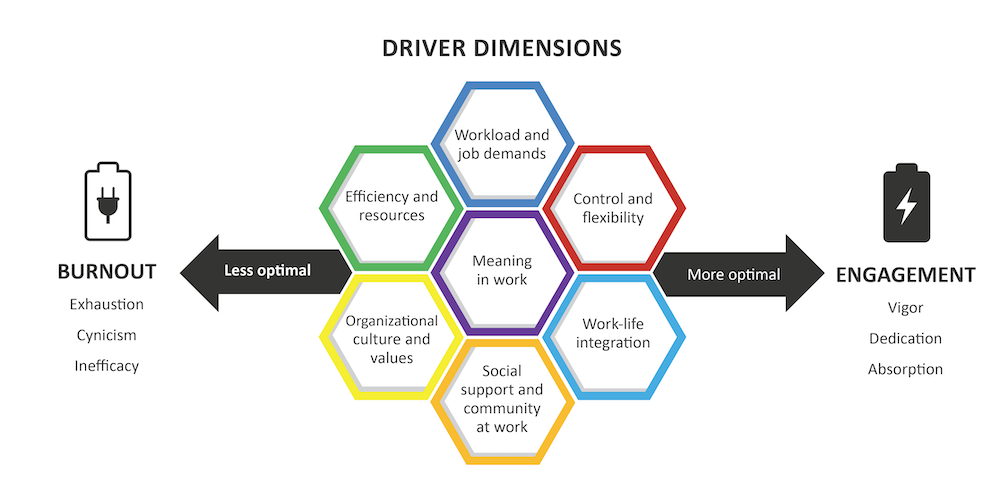
Indicators such as patient volume, patient satisfaction and financial performance have long been used to assess the stability and viability of health care organizations.
However, an article published in JAMA Internal Medicine found overwhelming evidence that physician well-being is just as important as these more "traditional" factors.
With the 2017 CMA National Physician Health Survey finding that 30% of physicians suffer from high levels of burnout, there is a clear need to implement systemic strategies to address physician wellness. Doing so will support both individual physician health and the health of the organizations where they work.
Key factors that affect physician burnout
Adapted from Mayo Clinic Proceedings.
- Workload and job demands
- Efficiency and resources
- Organizational culture and values
- Social support and community at work
- Work-life balance
- Control and flexibility
- Meaning in work

Benefits of implementing physician wellness programs
Physician health and wellness
Collegiality and collaboration
Efficiency and work effort
Quality of care
Patient satisfaction
Medical errors
Physician turnover
Key considerations in wellness program planning
Psychosocial factors
Current health care landscape
Existing goals and processes
System interaction
Stakeholder input
Ideal future state
How to introduce wellness supports into learning, training and practice environments: 5 steps to get started
1. Assess the problem
- Measure physician wellness using consistent, valid and reliable scales to enable comparison with national data. View the 2017 CMA National Physician Health Survey, then read its appendix for a description of the scales used.
- Select a set of dimensions and assess them at regular intervals to track changes over time.
- View the typical stages in an organization's journey toward improving physician wellbeing.
2. Identify existing processes
- What has worked in your organization and what hasn't?
- What steps will need to be taken to develop a program or modify an existing one?
- Are there existing programs in other organizations that you could adapt?
3. Review system interactions
- How do individuals, the organization and its culture interact across the drivers of physician burnout?
4. Assemble your team
- Identify a leadership team of two or three physicians and administrators with expertise and interest in physician wellness.
- Let the leadership team know that their feedback and recommendations are not just symbolic — they will inform and influence the decision-making process.
5. Survey the stakeholders
- Identify and survey all key stakeholders in your organization to understand their needs.
- Conduct focus groups with seven or eight physicians.
Adapted from JAMA Internal Medicine and the American Medical Association.
Results from the latest 2021 National Physician Health Survey and more recent physician health and wellness data are available here.
Topics
Governance tools Burnout Leadership and professional development Training Change management Organizational wellness
Are you in distress? Get help now.













